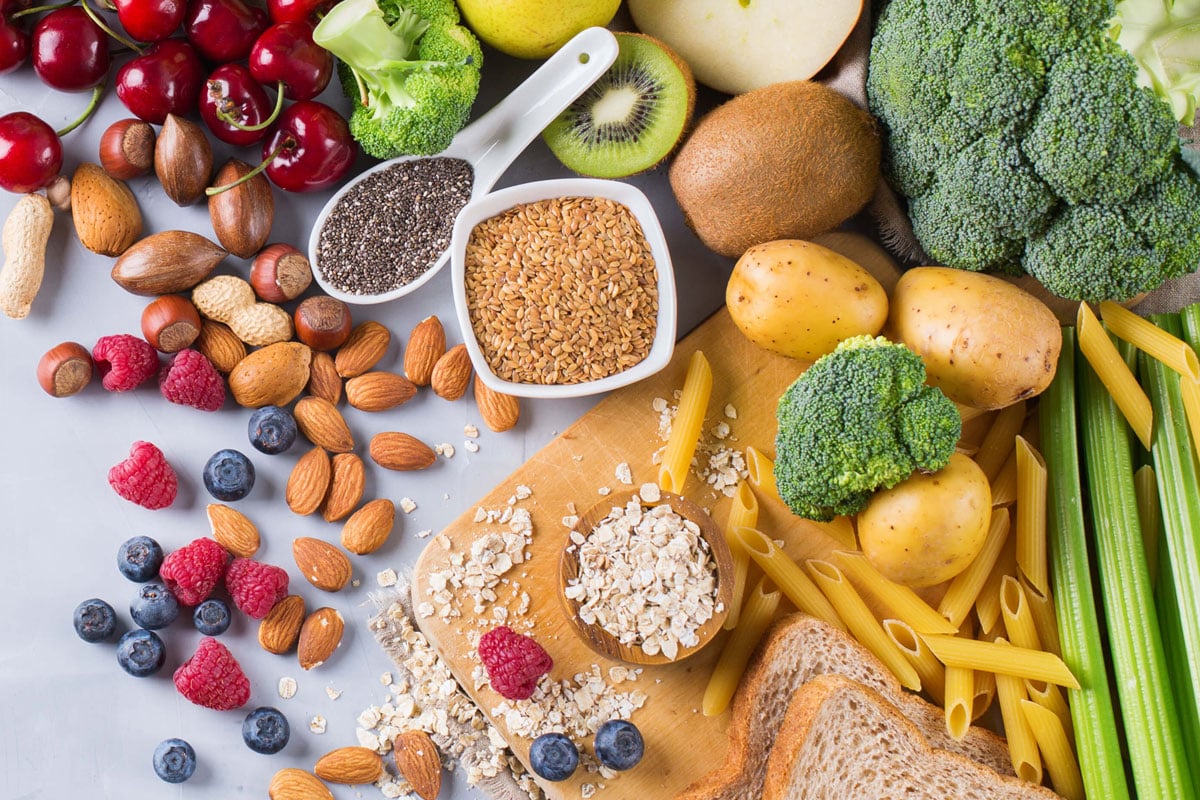Life isn’t always pretty — especially when your gut gets involved. Gas, bloating, the runs, constipation… These are not pleasant topics. But they adversely affect millions of people every day, and if you are one of them, then you know that these issues can be a pain in more than just your you-know-what. Digestive issues can run the gamut from a minor irritation to a daily problem.
Thankfully, there are several things you can do to help your digestive tract get on track:
- Consult Your Doctor — If your digestive issues are more than a minor and rare annoyance, you should see your doctor to find out if there is an underlying issue involved.
- Track Your Eating Habits — A food journal will let you know if there are specific foods that trigger your digestive issues.
- Go Pro — As in probiotics. Probiotics are the good bacteria that help your digestive tract do what it needs to. They are found in healthy digestive tracts, but their number is often diminished by poor diet and certain medications.
- Increase Your Fiber Intake — Getting enough of the right kinds of fiber into your daily diet is essential for digestive health. Fiber helps your body process the other foods that you eat. It can help keep your bathroom trips regular and more comfortable, as well as help manage blood sugar levels and cholesterol (which are definitely things you should have your doctor check regularly).
Tell Me More About This Dietary Fiber Thing…
Too many people believe that “getting enough fiber” means eating some wheat bread or lettuce. And while whole grain breads and lettuce do contain some fiber, there is much more to the whole fiber story.
Let’s start with some definitions. First, what is fiber? Well, fiber is what your grandmother referred to as “roughage” – and yes, she probably called lettuce by that very term sometimes. What that means is that fiber is the part of a plant-based food that is not completely broken down by enzymes in the digestive system. This causes them to travel through the digestive tract relatively intact, gathering up the remains of other foods you have eaten and taking them along for that all-important ride.
There are 2 types of fiber:
- Soluble: Soluble fiber absorbs water and creates a gel-like substance. Think of it like making a bowl of oatmeal. This type of fiber travels slowly through the body gathering up bad things along the way, like cholesterol, while feeding the good things, like the good bacteria your intestines need for nutrient absorption. Soluble fiber can help you feel fuller and more satiated, especially when made part of a meal — or used as a snack to bridge the gap between meals (this is called “pre-feeding” and can help you from overeating when you finally do sit down for dinner). Good soluble fiber foods include the previously mentioned oatmeal, along with beans, apples, flaxseed, and blueberries.
- Insoluble: Insoluble fiber does not absorb water. This helps to “bulk” things up in a good way as it goes through your intestines, which can help with regularity. Insoluble fiber is what you get from whole grains, nuts, and vegetables.
The Fiber-Probiotic Connection
Fiber also does one very important thing: it acts as a prebiotic. Your digestive system is what is referred to as a “microbiome” — which means that it is an interactive environment for microorganisms. A healthy microbiome is filled with probiotics, the good bacteria that helps keep your digestive tract healthy. Probiotics need something to eat, and that something is fiber. Conversely, the bad bacteria in your guts thrive on sugar and fatty foods. So, as we said earlier, pre-feeding with fiber instead of sugary foods like cookies can be key to gut health.
How Much Fiber Do You Really Need?
Sadly, there is a very large gap between how much fiber most people eat each day and how much they really need. The recommended intake for healthy adults and children over 4 is 28 grams of fiber per day.
Unfortunately, the average intake per person is only 15 grams per day.
That is a huge fiber gap!
Let’s look at some foods and numbers:
- The average slice of whole wheat bread has 1.9 grams of fiber
- A cup of chopped broccoli gets you another 2.9 grams of fiber
- A serving of romaine lettuce adds about 2 grams
- A cup of cooked black beans yields 15 grams of fiber. Go beans! At least you get us to the average fiber intake, even if you fall short of the goal. But how many cups of black beans are you going to eat in a week, let alone a day?
As you can see, you can cobble together enough fiber every day — if you are mindful about what you choose and get the facts. But most people are not cobbling properly. Instead, we’re eating on the run and making the easy — but wrong — choices.
How Can You Increase Your Daily Fiber Intake?
It is possible to eat your way to a proper fiber intake each day. But when you consider your schedule—and how many trips to the grocery store it would take to get enough fresh fruits and vegetables and beans—you may want to consider some alternative yet convenient ways to boost your fiber number.
Some people turn to organic juicing, thinking that it will increase their fiber intake. Sorry – but no. Most of the fiber is lost when you juice, because even if you keep the peels in place, the pulp that is left behind is where the fiber is. So, while you are getting some good nutrients, what you’re mostly getting is a glass of flavorful sugar. Plus, home juicing is messy and can cost a bundle.
There are pre-made juice cleanses out there. However, check the label and you’re more likely to find a lot of sugar and a lack of fiber. And the cost is prohibitive to use on a daily basis.
One way to get the goodness of vegetables, berries, and fruit that people turn to are juice cleanse powders that they can then mix themselves. These powders are usually low in sugar… and, sadly, also low in fiber. Unless you find one that purposely adds fiber sources such as psyllium husk or flax seed to the mix. Remember, it’s the fiber that does the “cleansing,” so while there’s a lot of goodness in the “juice” portion of the name, it still falls short if it doesn’t contain added fiber.
In the end, it’s a good idea to count your fiber grams every day. Whole grains, beans, and vegetables should be your primary source. But if your numbers don’t add up to 28, then some sort of fiber supplement should go into your shopping cart.









